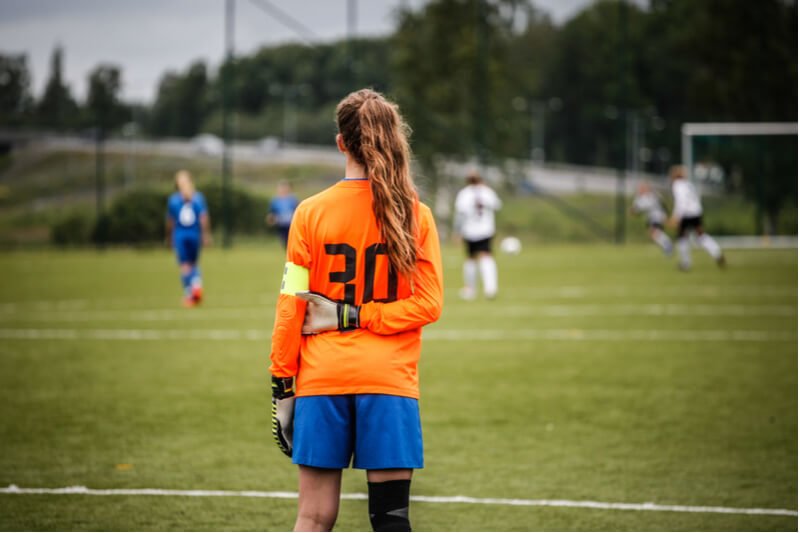
When many of us think of football, Cristiano Ronaldo, Lionel Messi, Luis Suarez, Harry Kane and Gareth Bale are just some of the influential stars we think of, both on the pitch and off of it. But do you notice something startling about this image? Yep, these athletes are all men, but they are now being joined by some big names in women’s football!
Megan Rapinoe and Marta have stormed into the limelight with some amazing performances in the recent world cup. We’re currently in a sea of change, with the perception and prominence of female sports, particularly football, shifting for the better over the past few years. This is something that is only being helped by the buzz surrounding the Women’s Football World Cup.
Why are things finally changing? Increased coverage of women’s sporting events is hugely important. This has led to the growing prominence of female sports stars in the media and better marketing of female-focused sports events. This in turn will generate more funding for these sports. The Women’s Football World Cup is just one of the tournaments that is making strides in each of these areas.
This is great news as the notion that football is a boy’s sport is a seriously outdated view. It’s 2019 and sports should be enjoyed by everyone. With many young girls probably still feeling like they can’t play football with the boys, shouting about female sporting events is vital for showing them they can enjoy football and succeed in it too. This is a great start for breaking down gender stereotypes and increasing inclusivity. However, it is also important to get girls and young women interested in sports due to the benefits being active gives for your mental and physical health.
inspiresport explores the key reasons why attitudes towards women’s football, the Women’s Football World Cup and women’s sport in general are changing below. We’ll also be examining why this is vital for helping to make the younger generation of women more passionate about sport…
What has changed for women’s football so far?
Women’s sport has long been overshadowed by men’s, and football being seen as a game for the boys has been ingrained in society for many, many years. This hasn’t been helped by the increased coverage and media attention surrounding men’s football and its top players – something that women’s football hasn’t received until now.
Interestingly, though, things haven’t always been this way, with many women playing football for fun when men went off to fight in World War One. In fact, this led to a female team (The Dick, Kerr Ladies) becoming England’s unofficial team during this time. However, due to worries that the women’s game would take popularity away from men’s football, the FA (Football Association) banned member clubs from letting women teams play in their grounds in 1921. The ban lasted just under 50 years, only being lifted in 1969. In the grand scheme of things, this really isn’t that long ago.
Even today, in 2019, there’s still a long way to go before men and women’s football is equal. Coverage is still dominated by male games and male players are still paid more. Fortunately, things are changing, starting with people’s attitude to the female version of the game. A recent survey from Opinium found that 76% of 2,000 UK adults (aged 18+) feel that interest in women’s football has increased discernibly in recent years. Of the men surveyed, 45% admitted that recent coverage of The FIFA Women’s World Cup and other female sporting events has made them respect women’s sport more and be more likely to follow them.
On the other end of the coin, 22% of women surveyed said that increased coverage of female sporting events has inspired them to try a new sport themselves. This is inspiring to see, but this statistic should be a lot higher. Many girls look up to the older women in their life, and to see them playing sports will only inspire them to do the same.
Nonetheless, 2019 has been a great year for women’s football in term of interest in the FIFA Women’s World Cup. Viewing figures for this year’s tournament reached a record-breaking 28.1m, and the semi-final match between England and the USA attracted 11.7m viewers. This is the highest TV audience of 2019 so far. This broke the previous UK viewership record of 4 million when England played the semi-final match of Euro 2017 against the Netherlands.
How the Women’s Football World Cup is promoting change
As the statistics indicate, women’s football (and female sport in general) has gained more interest and recognition, and this has been particularly evident with this year’s Women’s Football World Cup. Here are some of the ways that the event has helped to change people’s attitude towards women’s football and how this will make girls more likely to play the sport.
Increased coverage of female sports
The lack of coverage and media attention surrounding women’s sports (compared to men’s) has been an issue for many years. In 2015, a study called “It’s Dude Time” found that L.A based network affiliate sports news programmes dedicated only 3.2% of broadcast time to women’s sports. More recently, in 2018, the WNBA (Women’s National Basketball Association) Finals were shown mainly on ESPN2. This greatly restricted public access to the match, reducing viewership numbers.
In addition to this, a report by The Women’s Sport Network discovered that out of 34 articles published about the 2018, Paralympic Games, only 21% were about female Paralympians, while 35% were about both male and female athletes. They examined the coverage from four major US news websites; ESPN, NBCOlympics, the New York Times, and USA Today.
Though the coverage of women’s sports is still lower than it should be, this is despite growing demand. As the Women’s Sport Network point out in their examination of women’s sports media coverage, the 2018 Olympic women’s gold medal hockey game between Team USA and Team Canada generated the best ever-late night rating for NBCSN. As mentioned previously, the semi-final match of the Women’s Football World Cup in 2019 also broke records, pulling in over 11 million viewers. The tournament was extensively covered by the BBC (who broadcast the live matches) and other news outlets.
With more coverage being given to women’s sports in the media, more people are going to be inspired to tune in as they are more accessible. This is evidenced by viewership figures and the aforementioned Opinium study. However, this is also important because if young girls see women playing sport on TV and excelling at it, they will feel like they can do this too!
Better marketing of women’s sporting events
Marketing is incredibly powerful, whether it’s in the form of a billboard or an ad on TV. It can influence the way we think on a subconscious level, with the adverts we see in our everyday life influencing our thoughts, feelings and emotions, even if we’re not aware of it, and long after we’ve seen it. This is why increasing the marketing of women’s sports has been a key driver in changing attitudes towards them.
A great example of how the marketing around female sporting events is evolving is this year’s Football World Cup. Many big brands invested money into the women’s tournament, including Lucozade Sport, Head & Shoulders, and Visa. In December 2018, Visa unveiled an exciting seven-year partnership with UEFA, making them the first ever sponsor of women’s football in Europe. Alongside this, the company also launched their ‘One moment can change the game’ campaign (which included an ad showing girls playing football which was inspired by real female footballer players), and announced that they would be investing as much money into marketing the FIFA Women’s World Cup in 2019 as the men’s version of the tournament in 2018.
The BBC is another that’s dedicating more time and money to female sport. Through their Change the Game campaign, the BBC is aiming to be the biggest destination for women’s sport over Summer 2019. They have pledged to broadcast a number of female sporting events live, including the Football World Cup, Netball World Cup, Wimbledon Championships and Cricket World Cup. They will also be creating podcasts and covering these events on radio.
Why is this important for inspiring the new wave of female athletes? The younger generation of today are very vocal about the things they see. Whether it’s a programme they’ve watched on television or a billboard they’ve walked past and snapped a picture of, they are probably discussing these on social media; in 2017, there were 2.46 billion social network users in the world, and this number is continuing to increase. If young people see their peers openly expressing interest in women’s sports both through social media and in person, they will be inspired to as well.
Prominence of female sports stars
Thanks to increased media coverage of women’s sporting events and the growing dominance of social media, female athletes are now being given a platform to shout about their passion and achievements. With more and more younger people using social media, this gives young women a whole host of new role models and their achievements to be inspired by.
One such example of an athlete that is making the most of their social media presence is the American football player, Megan Rapinoe. She has openly spoke out about racism and gay rights, dropping down to one knee when the national anthem was playing during her match for the Seattle Reign in a National Women’s Soccer League game in Chicago. In 2019, she also caused a stir when she told a reporter that she wouldn’t visit the White House if the United States won that year’s World Cup (which they actually went on to do).
For P.E teachers, you should be educating students of all genders about inspirational female athletes, as well as encouraging the boys and girls in your class to play sports together (in mixed gender teams), and incorporating the same sports into their teaching, This promotes exclusivity, breaks down barriers, and will hopefully make more young girls encouraged to play football and other sports that have been conventionally been considered as just for the boys.
As you can see, attitudes to towards women’s football and other women’s sports are changing for the better. However, we still have a long way to go in terms of securing equal coverage of games and more comparable pay for male and female players. To aid in the fight for equality, teachers should instil the message of girls getting interested in sports at a young age to help shape the next generation of female football players!






